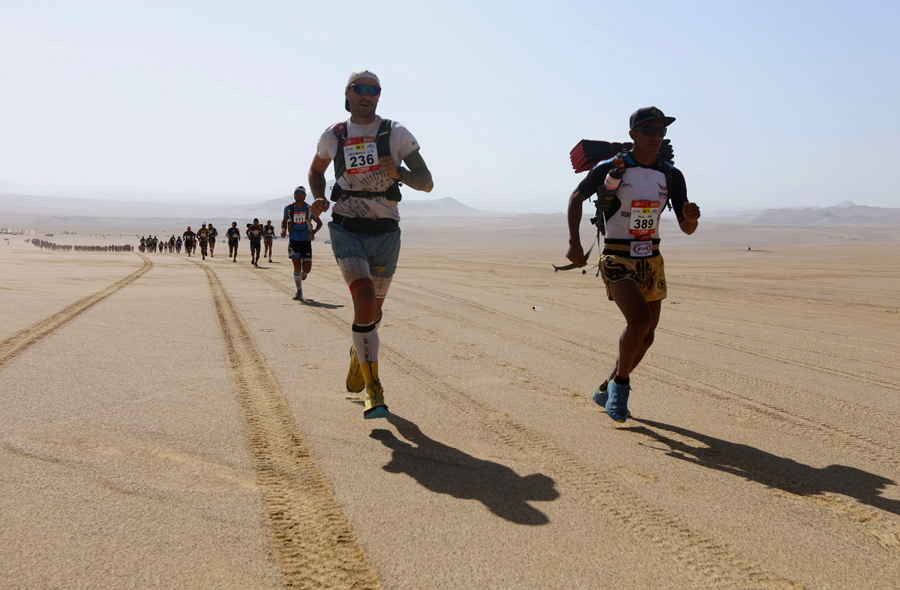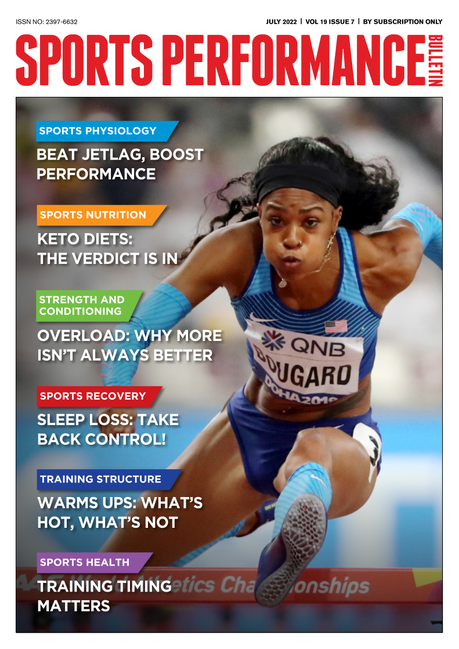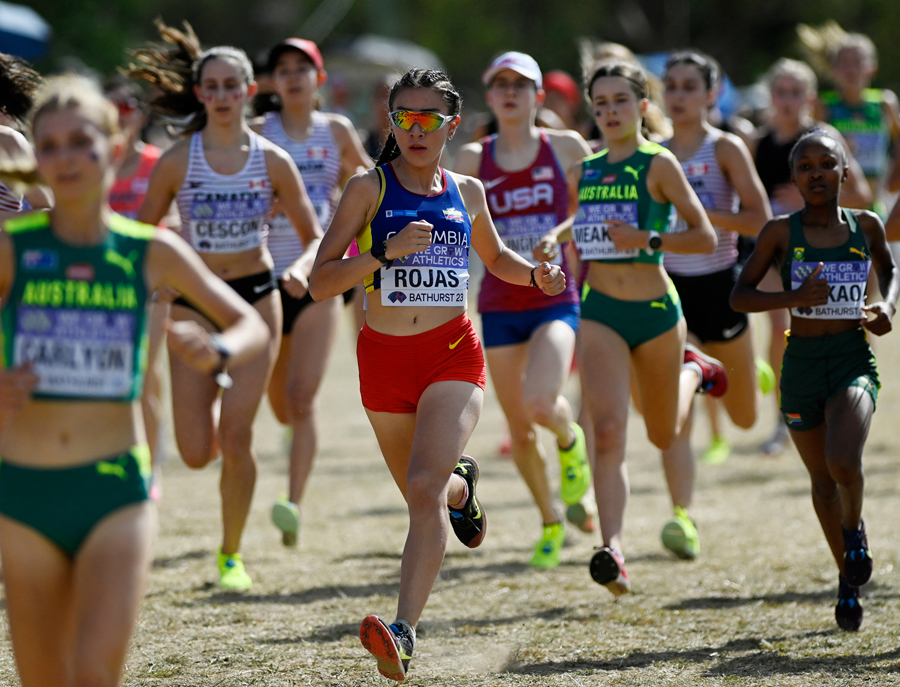You are viewing 1 of your 1 free articles. For unlimited access take a risk-free trial
Enduring endurance: a durability deep dive
Durability is now understood to be a crucial metric of endurance performance. But what are the constituent elements of durability and what are the implications for athletes in training? Andrew Sheaff presents new evidence
Historically, sports scientists have assumed there are three primary drivers of endurance performance- VO2max, lactate threshold, and economy. VO2max is an indicator of the maximum amount of oxygen that can be used to produce energy; the more energy that can be produced, the higher the speed that can be sustained. Lactate threshold is a measure of what fraction of that oxygen can used sustainably to create energy without the accumulation of (fatiguing) lactate in muscles. Economy meanwhile indicates how efficiently that energy can be used to generate athletic motion.
Not so straightforward
It all seemed pretty straightforward; athletes need to be able to use oxygen to produce a lot of energy, sustain as high a percentage of their maximal energy output as possible, and be able to use that energy as efficiently as possible. The athlete that had the best combination of those three factors would win. However, built into this paradigm is the assumption that these physiological traits are static throughout a race or competition – ie an athlete’s VO2max is the same before and after, their lactate threshold is the same before and after, and their economy is the same before and after. Unfortunately, this assumption is false.
Initially suspected by intuitive coaches, and recently confirmed by scientific research, there is a fourth component that is critical for successful endurance performance. That component is the athlete’s durability, or their ability to maintain robust physiological function (VO2max, lactate threshold, and economy) throughout a race or competition. [Ed – see this article by Andrew for a more in-depth discussion about the concept of durability]
As durability has gained more and more research attention, initial answers have prompted more questions which have led to rapid changes in our understanding of durability. One of the key findings is that ‘durability’ doesn’t describe one single physiological process. In fact, it describes at least four, all of which emerge in unique situations for unique reasons. These different types of durability are all relevant, but they may be more or less relevant to different athletes, depending on the competitive demands of their chosen sport and events. Understanding these different types of durability will lead to better research and better practical application, helping coaches and athletes more effectively solve specific training and performance problems.
New durability research
A recent review paper by four leading scientists has sought to clarify the different types of durability(1). They defined four different types of durability (see figure 1 for a visual representation), explained the likely physiological causes of a loss in durability for each type, and provided training implications for each. Let’s take a look at each in greater detail, as well as potential training applications to limit losses of performance.
Basic durability
The authors defined basic durability as the ‘deterioration in physiological characteristics over time during. prolonged exercise’. The specific focus here is on a loss of the ability to deliver oxygen to the tissues and use oxygen to create energy. This tends to be most expressed during long-duration events, which consistently place a large demand on physiological function for an extended period of time. This is very similar to the original definition of durability expressed as a reduction in VO2max, lactate threshold, or economy over the course of an exercise bout.
From a physiological perspective, there are several potential causes of a loss in physiological function. The authors cite a gradual increase in heart rate, neuromuscular fatigue, glycogen depletion, slow increases in oxygen demand, decrease in threshold, or a loss of economy as factors. Of course, these can all interact to produce an overall loss of performance.
From a training perspective, enhanced durability may be one of the reasons that strength training counter-intuitively enhances long duration performance. As strength training is performed at high intensities for very brief durations, it differs significantly from long-duration performance, yet it has been shown to improve endurance performance. By strengthening the muscles, athletes may not improve performance directly but improve the ability to sustain a given performance level.
Beyond the impact of strength training, exposure to long-duration training bouts is likely to enhance durability. While long runs or similar activities may not necessarily be the most efficient way to enhance metabolic function, they often remain in training program as coaches and athletes recognize that they do ‘something’. That ‘something’ is likely enhancing the ability to maintain performance over very long durations!
Figure 1: The four elements of durability
The third column shows graphical plots of the how a decline in performance typically manifests itself according to which element of durability is impacting the athlete. The octagon below the ‘resilience’ element shows that kinds of internal and external factors that can affect the resilience element of durability.
Fatigability
In contrast to durability term fatigability is defined as ‘an acute impairment of performance that includes both an increase in the perceived effort necessary to exert a desired force and an eventual inability to produce this force’. Here the focus is on a loss in force production as opposed to a loss in physiological function or energy production and delivery. Athletes often perceive an increasing difficulty to produce the same level of force, and then an eventual loss in force production capability.
A key difference between fatigability and repeatability - a term we’ll explore shortly - is that fatigability is present absent of any recovery period. In other words, athletes struggle to maintain a high level of performance when they do not have access to recovery. Fatigability also differs from basic durability when competition or training requires varying amounts of intensity, rather than a consistent steady output.
When intensity begins to ramp back up, an increase in fatigability leads athletes to struggle to meet the work demands. Some athletes look great when they’re fresh, and performance quickly tanks when they’re put under stress. Those athletes demonstrate a high level of fatigability. Competitive examples involve trail running and cycling as both involve continuous efforts with varying terrain that demands shifting intensity levels.
Physiologically speaking, fatigability may be driven by accumulating lactate levels or elevations in heart rate while remaining at the same intensity level, particularly when no recovery is present. Neuromuscular fatigue and a loss in force production capability may be present as well, in addition to the accumulation of other metabolic byproducts.
To reduce fatigability, it can be prudent to focus on low and medium intensity work, helping to delay the impact of fatigue. If low and medium intensities can become easier, it becomes easier for athletes to restore physiological function during lower intensity segments, as opposed to slowly accumulating fatigue in the absence of passive recovery.
Repeatability
Repeatability is defined ‘as an athlete’s capacity to recover and reproduce high-intensity performance across multiple bouts, stages or heats with passive recovery in between, inherently reflecting recovery kinetics and metabolic resilience between efforts such as team sprint in cross-country-skiing.’ Repeatability and fatigability differ in that repeatability involves the ability repeat a performance following a recovery period. In sports like athletics and swimming, there are often multiple rounds that athletes must navigate. The ability to maintain performance between rounds is key for performing successfully during the final rounds where the placings are decided. Repeatability is also relevant in team sports where athletes typically have periodic rest breaks.
From a physiological perspective, athletes with high levels of repeatability are better able to clear fatigue from their system and restore physiological function during the breaks that are provided. This could include the ability to process and clear metabolic byproducts, the ability to restore muscle glycogen, and the ability to restore hormonal balance. The limiting factor will likely depend on the type of activity and the duration of the rest period. For example, an athletics sprinter is unlikely to suffer from glycogen depletion between rounds but may struggle have a robust hormonal response following an initial effort. As a rule of thumb, the longer the bouts and the less recovery time available, the greater the strain will be on repeatability.
Interestingly, the authors suggest that improving repeatability is often a function of ‘maturity and accumulated training experience’. In other words, it takes a lot of exposure to situations demanding high repeatability to develop the robustness to perform effectively. While it’s unlikely that this process can be circumvented, consistent exposure to training and competitive situations where athletes must repeat performances will enhance repeatability. Ensuring basic fitness is in place will also enhance repeatability robustness.
Resilience
The authors defined resilience as ‘the ability to resist fatigue and maintain performance. Resilience extends beyond physiological fatigue resistance by incorporating the athlete’s adaptability to internal and external stressors, including environmental and psychological challenges.’ In other words, performance doesn’t occur in a vacuum. There are performance expectations, environmental challenges, and pressure. These factors all impact the ‘resilience’ of an athlete and their ability to consistently achieve a high percentage of their potential.
Beyond ensuring the necessary physical fitness is in place, athletes must be comfortable overcoming the challenges they face within competition. When environmental considerations are present – eg heat, cold, wind, altitude etc - ensuring that athletes are experienced in those conditions is paramount. Furthermore, ensuring that athletes can manage any psychological challenges – for example spectator pressure - that come with competition are a critical component of effective preparation. Enhancing resilience involves preparing to perform in spite of challenging external factors.
Using this information
When it comes to applying this information, the first key step is to take a look at your sport of choice and identify which of the aspects of durability could potentially be playing a role in performance. Depending on the sport, it’s possible that only one is relevant and it’s also possible that all are relevant to varying degrees. From there, develop a program to address these challenges using the recommendations above. It’s important to ensure that you’re developing the relevant component(s) of durability to ensure that you or your athletes can achieve as high a percentage of what’s possible when it matters most.
References
1. J Appl Physiol (1985). 2025 Jul 1. doi: 10.1152/japplphysiol.00343.2025. Online ahead of print
Newsletter Sign Up
Testimonials
Dr. Alexandra Fandetti-Robin, Back & Body Chiropractic
Elspeth Cowell MSCh DpodM SRCh HCPC reg
William Hunter, Nuffield Health
Newsletter Sign Up
Coaches Testimonials
Dr. Alexandra Fandetti-Robin, Back & Body Chiropractic
Elspeth Cowell MSCh DpodM SRCh HCPC reg
William Hunter, Nuffield Health
Keep up with latest sports science research and apply it to maximize performance
Today you have the chance to join a group of athletes, and sports coaches/trainers who all have something special in common...
They use the latest research to improve performance for themselves and their clients - both athletes and sports teams - with help from global specialists in the fields of sports science, sports medicine and sports psychology.
They do this by reading Sports Performance Bulletin, an easy-to-digest but serious-minded journal dedicated to high performance sports. SPB offers a wealth of information and insight into the latest research, in an easily-accessible and understood format, along with a wealth of practical recommendations.
*includes 3 coaching manuals
Get Inspired
All the latest techniques and approaches
Sports Performance Bulletin helps dedicated endurance athletes improve their performance. Sense-checking the latest sports science research, and sourcing evidence and case studies to support findings, Sports Performance Bulletin turns proven insights into easily digestible practical advice. Supporting athletes, coaches and professionals who wish to ensure their guidance and programmes are kept right up to date and based on credible science.










